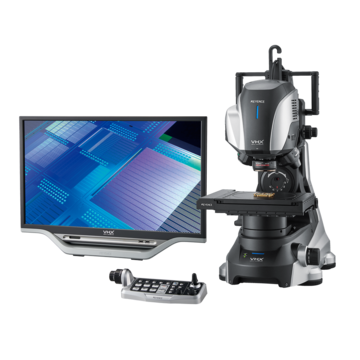Digital Microscopes
Image Sensor
The Mechanisms Behind the Image Sensor

An image sensor is generally made up of many small photodiodes that convert light into an electrical signal. As light hits the surface of the device and is focused onto each photodiode via a micro lens, the image sensor then converts it into an electrical signal before outputting the final image.
Image sensors are able to gather light intensity information, but by themselves, are unable to reproduce colors.
In order to create a color image, an RGB (red, green, blue) filter is placed in front of the photodiodes.
Alternatively, a CMYG (cyan, magenta, yellow, green) filter can be used, though an RGB filter will provide for better color reproduction and is better suited for digital imaging.
The number of pixels in the image sensor
The number of pixels in the image sensor can be described in terms of the number of total pixels, the number of effective pixels, and the number of virtual pixels.
In a color image sensor, there are pixels that line the perimeter of the device and help to control the color and light intensity of an image, although they do not directly contribute to the formation of an image.
Total pixels refer to the number of pixels contained within an image sensor, regardless of whether or not they are used to generate an image.
Effective pixels describe the number of pixels used, including the ones that help determine the color being displayed by each pixel. Virtual pixels refer to the pixels that are actually used to generate and form an image.
We’re here to provide you with more details.
Reach out today!

Creating a Digital Image
In order to display an image with a digital microscope, an image sensor with a color filter converts the light received from the lens into digital signals.
After processing those signals, the data is then converted into an image and displayed on-screen.

A : Image sensor B : Analog signal C : Pixel conversion
D : Digital signal E : Digital operation
Mechanism behind the creation of digital images
We’re here to provide you with more details.
Reach out today!

Digital Imaging Performance (Resolution and Color Resolution)

A : The number of horizontal and vertical pixels that make up an image = Display resolution
B : The number of color or brightness levels one pixel can represent = Color resolution
Two of the performance indicators for digital imaging are display resolution and color resolution.
Display resolution refers to the construction of an image from a given number of pixels, with a higher pixel count being associated with a higher resolution image. Color resolution refers to the ability of each pixel to represent subtle brightness and color tones in the digital image.
We’re here to provide you with more details.
Reach out today!





